Parasitoids of the Wild Silk Moths
(Saturniidae)
by Kirby L. Wolfe
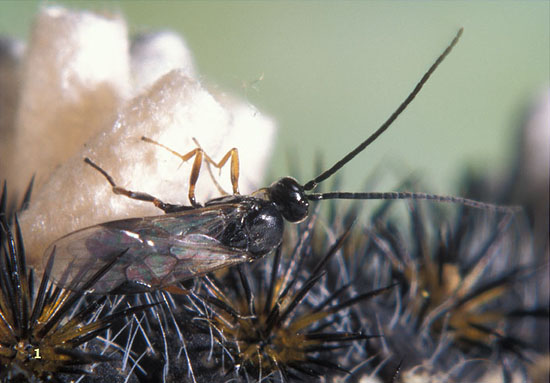

There are thousands of species in the Braconidae family of tiny wasps and all are parasitoids. The Electra Braconid Wasp attacks mainly caterpillars of different Hemileuca and Agapema species and their relatives, mostly small moths of the western United States and Mexico.A Hemileuca electra larva, seemingly free of parasitoids, is pictured to the right. |
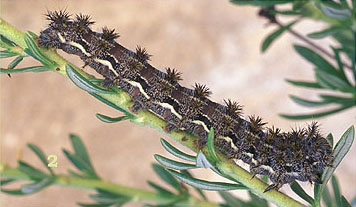 |
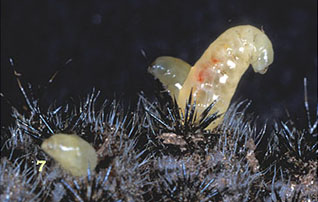 |
The image to the left shows wasp larvae emerging through integument (skin) of caterpillar.The female wasp lays its eggs in young caterpillars. The eggs hatch and the wasp larvae begin eating the inside of the caterpillar while the caterpillar continues to feed. |
A caterpillar may host several dozen wasp larvae, which burrow out through the caterpillar’s integument (skin) when they are finished growing.The yellowish wasp larvae spin tiny cocoons of white silk, often attaching the cocoons to the spines of the still alive caterpillar, which eventually stops eating and dies. | 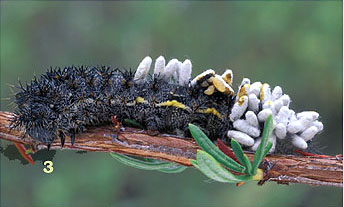 |

Wasp larva spinning a silk cocoon.
After a few weeks, the adult wasps, like small ants less than 1/8 inch (2.3 mm) long, open their cocoons and fly away to mate and repeat the process.To the right, a wasp has just emerged from its cocoon. | 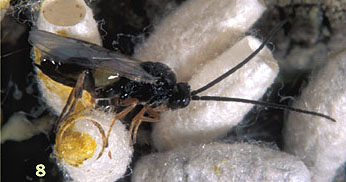 |
Go to Eupelmids: Anastatus; tiny species; parasitoids of insect eggs
Go to Belvosia nigrifrons; Tachinidae fly species
You are here Cotesia electra: the Electra Braconid Wasp
Use your browser "Back" button to return to the previous page.
Return to Kirby Wolfe Index